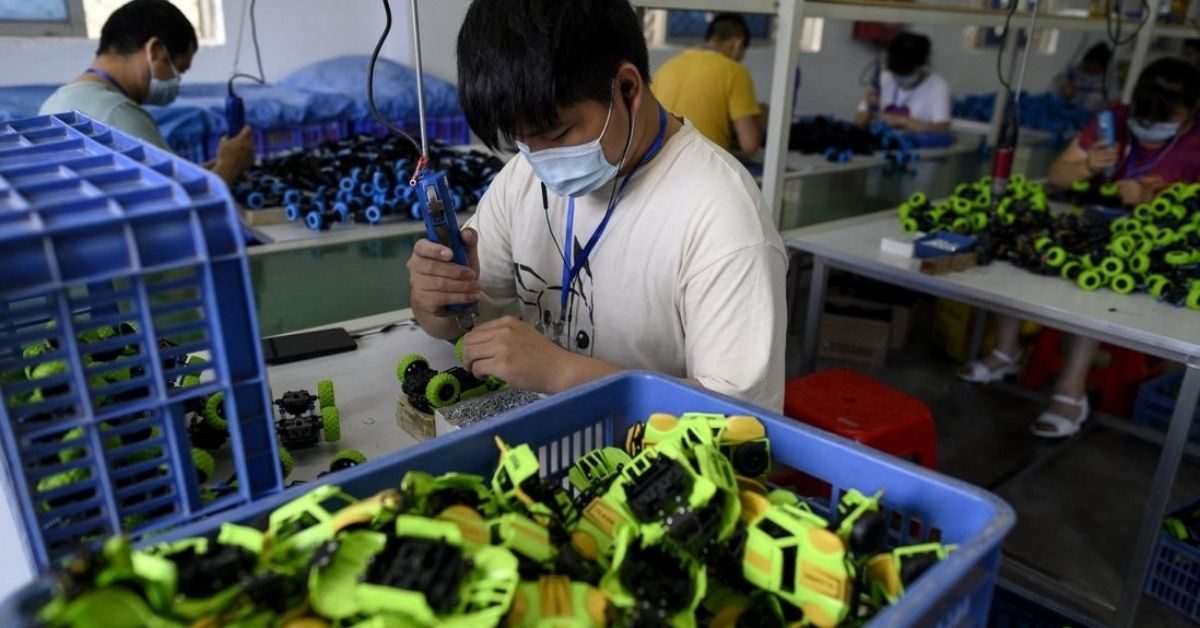Chinese exporters are being hurt by sky-high freight costs and rising raw material prices, rather than falling demand for goods from developed countries that are ready to reopen their factories, manufacturers say.
Freight prices have jumped more than 400 per cent from their lowest point last year, according to the Shanghai Containerised Freight Index, causing importers to question the economic viability of buying from China.
Lu Zhengwei, chief economist at China Industrial Bank, said freight costs as a proportion of total export expenses were no longer trending down, as they were before the coronavirus pandemic began.
“It should be pointed out that the impact of rising freight costs on exports of various industries is not balanced,” Lu said in a note last month.
“Goods with high unit value and small volume are less sensitive to rising freight costs, while goods with low unit value but are large in volume are more sensitive to rising freight costs.”
One of the reasons labour-intensive products such as toys and other Christmas goods from China are so price competitive is because they are sent by the cheapest mode of transport – shipping.
But as sea freight prices have surged in the past 18 months, some importers have started to scale back their buying, according to Celery Li, a sales manager at a Dongguan-based toy company.
Li, whose company exports playing cards and board games to North America and Australia, said many clients had cancelled orders over the past two months after her company raised prices on the back of surging raw material and freight costs.
Li said her company’s Christmas orders from the United States and Australia even declined this year compared to 2020, when the pandemic was far from under control.
“We are supposed to be really busy from May to October each year, but we haven’t had any peak season this year,” Li said.
The pandemic has not only hurt shipping capacity around the world, but it has taken a heavy toll on supply chains, with some Chinese manufacturers saying it is becoming too expensive to source the materials they need to make the goods they sell.
To cope, many producers of low-value goods such as Li’s company have started cutting back on production and turning away orders to preserve their margins.
In the process, the high freight costs have changed the make-up of goods exported from China, Lu said.
“During the pandemic, exports of goods with higher unit value and smaller volume performed better than those with lower unit value and larger volume,” he said.
“The most typical example is the rapid growth of exports from the computer communications industry and pandemic-related pharmaceutical industry, while the growth with lower added value but large volume has been sluggish.”
While the total value of Chinese exports rose 25.6 per cent in August to US$294.32 billion from a year earlier, the export volume of various products – ranging from bicycles to home appliances – declined over the same period, according to Chinese customs data. The rising prices for products concealed the declining export volumes, experts said.
The trend is likely to continue unless current freight costs are addressed, said Zhong Zhengsheng, chief economist of Ping An Securities.
“This year’s Christmas orders might have stretched out over a few months, causing a ‘smoothing’ effect in China’s monthly exports data,” he said. “The buyers anticipate the higher freight costs and the congestion problems, so many have placed orders in advance.”
There are more signs Chinese exports might have peaked, too.
The new order and new export order subindices of China’s official manufacturing purchasing managers’ index fell to 49.3 and 46.2 respectively in September, indicating overseas demand for Chinese products has weakened, particularly as other economies slowly return to normal. The two subindices have declined for three and six months consecutively to September.
China’s recent power supply crisis, which has affected more than half of the country’s provinces, has also forced many factory owners to halt production or reduce hours of operation, setting up for exports to fall further.
A Guangdong-based factory owner and bicycle maker, Derrick Tian, said while he had not received orders from local governments to cut power use, he was worried he might soon.
“Bike manufacturing also consumes quite a lot of electricity, we might be asked to stop operation at any time,” he said.
Source : SCMP







